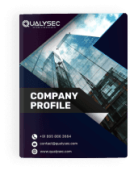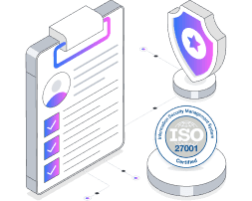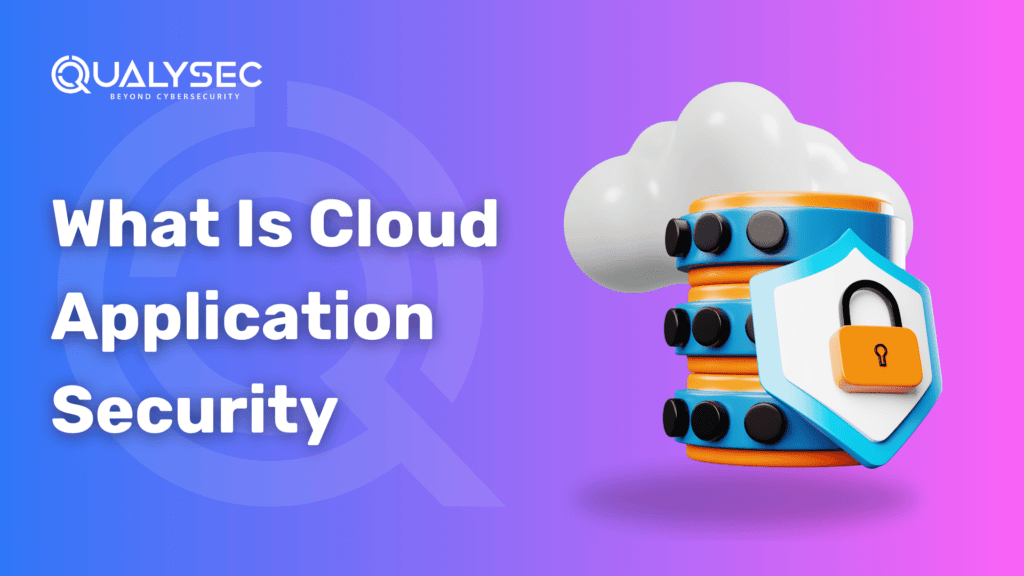Qualysec: The Best Cloud Security Company in Doha, Qatar (2025)
Cloud security is now a part of the standard for businesses that must protect their sensitive data from cyber-attacks. With businesses in Doha, Qatar, fast-tracking their migration to cloud infrastructure, having robust security is essential. Qualysec is the highest-rated cloud security company in Qatar with cutting-edge solutions guarding businesses from cyber attacks. This article explains why Qualysec is the top choice for cloud security in Doha, detailing its services, technology advancement, and customer-centric strategy. Comprehending Cloud Security Challenges in Qatar The emergence of cloud computing has revolutionized how companies operate, allowing scalability, affordability, and remote work. Along with such advantages, however, come serious security challenges: Data Breaches & Cyberattacks Cybercriminals continuously come up with new ways of compromising cloud environments, making companies in Qatar vulnerable to considerable data breach risks. The data breaches may arise due to ineffective access controls, cloud application security weaknesses, or misconfigurations. Hackers exploit such loopholes as entry points to harvest sensitive customer data, financial data, or business confidential information, leading to high financial and reputation loss. Qualysec anticipates such risks ahead of time by employing advanced penetration testing, vulnerability evaluations, and real-time monitoring tools so that organizations remain a step ahead of threat actors. Regulatory Compliance The laws of cybersecurity in Qatar are strengthening, and the companies are anticipated to comply with standards like ISO 27001, GDPR, and the National Information Assurance (NIA) guidelines. Such standards ensure organizations maintain robust data protection to secure business and customer data. Being compliant can be cumbersome and labor-intensive, though. Qualysec simplifies the process with customized compliance frameworks, risk management, and constant audits to aid businesses in meeting regulatory compliance with minimal disruption. Latest Penetration Testing Report Download Identity & Access Management (IAM) Unauthorized access is one of the biggest cloud security threats. A breached Identity & Access Management (IAM) system can lead to credential theft, insider attacks, and privilege escalation attacks. Enterprises find it challenging to keep tight access controls, especially in multi-user scenarios. Qualysec strengthens IAM security with Zero Trust Architecture (ZTA), multi-factor authentication (MFA), and role-based access control (RBAC). These controls ensure that only authorized users see sensitive business information, significantly lowering the risk of unauthorized access. Multi-Cloud Complexity It is predominantly the case for Doha-based companies that are built on multi-cloud, running such platforms as AWS, Microsoft Azure, and Google Cloud. Cloud providers’ security management could prove challenging as there are distinct security settings and vulnerabilities on each platform. Qualysec is a multi-cloud security solution provider that offers cloud security posture management (CSPM), cloud workload protection (CWP), and automated security testing services. Such services allow organizations to maintain a uniform security environment in different cloud environments, offering seamless threat protection. Threat Detection & Incident Response Cyber attacks are evolving at a rapid rate, and real-time threat detection along with quick incident response is critical for business continuity. Delays in responding to security incidents can result in data loss, business downtime, and legal liabilities. Qualysec provides AI-driven threat intelligence, real-time monitoring, and automated incident response features to detect and neutralize threats in real-time. With 24/7 Security Operations Center (SOC) services, organizations can be assured that their cloud infrastructure is protected from cyber threats, minimizing the effects of potential security incidents. By addressing these issues with the newest security solutions, Qualysec enables Qatar companies to operate securely in the cloud while remaining compliant, secure, and resilient to cyber threats. Why Qualysec is the Best Cloud Security Provider in Doha Qualysec stands out as the best cloud security provider in Doha due to its top-notch cloud security services that address these issues. Here’s why: 1. Advanced Penetration Testing Penetration testing is essential to identify vulnerabilities before they are exploited by malicious users. Qualysec employs AI-powered penetration testing that replicates real-world attack situations, helping organizations improve their cloud security defenses. Its experts are adept at: Web Application Security Testing – Identifies vulnerabilities in web applications, secure authentication, encryption, and session management. API Security Assessments – Protects APIs from injection attacks, broken authentication, and uncontrolled data exposure. Cloud Infrastructure Security Audits – Scans cloud configurations, identifies misconfigurations, and ensures consistency with best security practices. Red Teaming Exercises – Conducted massive attack simulations to evaluate the ability of a company to identify and counter cyber attacks. Through this proactive measure, companies can make sure they remain secure from evolving cyber-attacks, reducing data breaches, ransomware attacks, and illegal access. 2. Risk & Compliance Management Compliance does not have to be daunting, as Qualysec simplifies it. It provides tailored security solutions to allow organizations to adhere to local and global legislation, including: ISO 27001 & ISO 22301 – Enables the creation of effective information security and business continuity policies. GDPR Compliance – Protects personal data and imposes privacy controls on organizations handling customer data. NIA Qatar Cybersecurity Framework – Adheres to the national laws of Qatar to protect critical infrastructure. Financial Sector Security Regulations – Protects banks and finance institutions against fraud, secure transactions, and regulatory compliance requirements. Qualysec Compliance protects companies from enormous fines, lawsuits, and reputation loss, and creates consumer confidence and wealth for the company in the long run. 3. Zero Trust Architecture (ZTA) Zero Trust is a revolutionary security paradigm that trusts no one within or without a network in the initial phase. Qualysec embraces Zero Trust frameworks for cloud security in cloud computing ecosystems with the advantages of: Zero Trust Identity & Access Controls – Controls access by limiting it to roles of users and real-time checks for authentication. Micro-Segmentation Network Security – Segments networks into isolated pockets that deter lateral movement for cyber attackers. Continuous Authentication & Least Privilege Access – Never grants users access to more data than they require for work tasks. Multi-Factor Authentication (MFA) Implementation – Adds an extra layer of security during login by requiring multiple authentication steps. Only allows authenticated endpoints and users to access private cloud resources, minimizing security breaches. 4. AI-Driven Threat Detection & Response Artificial intelligence has revolutionized cybersecurity and Qualysec is leading the way. Qualysec uses AI-based





